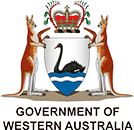Contact dermatitis
Key facts
- Contact dermatitis is a common red and itchy rash that happens when your skin touches an irritant or allergen.
- Contact dermatitis is caused by either allergens (such as plants or rubber) or irritants (such as certain soaps, chemicals or even water).
- Your doctor may diagnose allergic contact dermatitis with patch testing on your skin.
- Treatment involves avoiding the trigger and may include using creams or other medicines.
- Prevent contact dermatitis by wearing personal protective equipment like gloves, using barrier creams and keeping your skin moist.
What is contact dermatitis?
Contact dermatitis is a common red and itchy rash on your skin. It happens when your skin touches something that causes a reaction.
There are 2 types of contact dermatitis:
- allergic contact dermatitis
- irritant contact dermatitis
Some types of contact dermatitis are also called eczema.
Allergic contact dermatitis
Allergic contact dermatitis happens when you have an allergic reaction to a trigger touching your skin. This trigger is known as an allergen. You will only develop a rash a day or so after touching the allergen.
Irritant contact dermatitis
Irritant contact dermatitis happens when your skin reacts to something that damages it. If your skin is long or often exposed to an irritant, it can no longer protect itself. This can lead to irritant contact dermatitis.
What are the symptoms of contact dermatitis?
Contact dermatitis leads to itchy and dry skin. You may also notice a red rash or a severe weeping or blistering rash. The symptoms can range from mild to severe, depending on the type and duration of exposure.
If your skin has been in contact with the trigger for a long time, you may also develop thick and scaly skin.
If you have irritant contact dermatitis, your rash will show in areas where you were in contact with the trigger.
If you have allergic contact dermatitis, your rash can spread beyond the area where your skin was in contact with the trigger. You may only get a rash a day or so after you were in contact with the trigger.

CHECK YOUR SYMPTOMS — Use the Symptom Checker and find out if you need to seek medical help.
What causes contact dermatitis?
Allergic contact dermatitis may be caused by:
- some medicines you put on your skin
- cosmetics
- hair dyes
- plastic chemicals
- rubber and glues
- plants
There are many other possible causes. Once you are allergic to an allergen, you will be allergic to it for life.
Irritant contact dermatitis may be caused by:
- water (from washing your hands too many times)
- handwash, soaps, detergents or bleach
- something acidic, such as lemon juice
- industrial chemicals
- nail polish remover
Sometimes, triggers at work can cause allergic or irritant contact dermatitis.
When should I see my doctor?
You should see your doctor if you think you have contact dermatitis.
Also see your doctor if:
- you have a rash and any product you have been recommended is making it worse
- your rash is widespread
- your rash appears suddenly
- your rash is painful
- you have a rash and feel unwell or have a fever
ASK YOUR DOCTOR — Preparing for an appointment? Use the Question Builder for general tips on what to ask your GP or specialist.
How is contact dermatitis diagnosed?
Your doctor can diagnose allergic contact dermatitis by using patch testing. This usually takes around 5 days. Here's how it works:
- Sticky patches with small amounts of triggers are put on your skin, usually on your back, for 2 days.
- After 2 days the sticky patches are removed and your skin is assessed to see if there is a reaction.
- You will usually return to your doctor 2 days after the sticky patches are removed to assess your skin for a later onset reaction.
- Some people may need a further reading a few days later.
There is no specific test to diagnose irritant contact dermatitis. Your doctor may diagnose it based on your symptoms and history of exposure to irritants.
FIND A HEALTH SERVICE — The Service Finder can help you find doctors, pharmacies, hospitals and other health services.
How is contact dermatitis treated?
Treatment for contact dermatitis involves finding the allergen or irritant and avoiding it. Your rash should slowly go away once you avoid the trigger.
It's possible to have different types of contact dermatitis at the same time. You may need to avoid several different allergens or irritants.
Your doctor may refer you to a dermatologist or an allergist.
It's important to take good care of your skin to help it heal. Here are tips for you to try:
- Try not to scratch the affected skin.
- Keep your nails short so you don't accidentally scratch yourself and break your skin.
- Ask your pharmacist or doctor about products to help with dry, sore or itchy skin.
Your doctor may prescribe you a steroid (anti-inflammatory) cream or tablet.
Your doctor may also recommend therapies with ultraviolet light or special X-rays.
What are the complications of contact dermatitis?
If you have allergic or irritant contact dermatitis, your skin can become infected.
You should see your doctor if you have a fever or there is pus inside the blisters on your skin.
Can contact dermatitis be prevented?
Preventing contact dermatitis depends on how easily you can avoid the triggers causing it.
If you are unable to avoid triggers, here are some tips that may help:
- Wear personal protective equipment (PPE). This can include gloves, shoes, appropriate clothing, aprons and safety glasses or goggles.
- Use a barrier cream to protect your skin if you can't use PPE.
- Take short showers, wash your hands less often and avoid using soaps and detergents.
- Use moisturisers regularly to repair your skin and keep it moist. Apply them after your skin gets wet, such as after washing up or swimming.
Workplace tips:
- Your employer should inform you about potential hazards, skin health and proper use of PPE.
- Always wear your PPE correctly and follow all health and safety instructions.
- Tell your boss if something at work is causing you to have contact dermatitis.
If you are allergic to latex, use nitrile gloves.
Resources and support
- The Australian College of Dermatologists offers information about irritant contact dermatitis.
- Australian Society of Clinical Immunology and Allergy (ASCIA) answers frequently asked questions about allergic contact dermatitis.
- You can also call the healthdirect helpline on 1800 022 222 (known as NURSE-ON-CALL in Victoria). A registered nurse is available 24 hours a day, 7 days a week.
Do you prefer to read in languages other than English?
Safe Work Australia offers information about safety at work in many languages.
Looking for information for Aboriginal and/or Torres Strait Islander people?
- North West Hospital and Health Service has developed the First Nations Healthy Skin Program to raise awareness of skin conditions.
- Telethon Kids Institute has a program with information about healthy and safe skin.
- NACCHO can help you find an Aboriginal Community Controlled Health Organisation (ACCHO) or Affiliate near you.
Learn more here about the development and quality assurance of healthdirect content.
Last reviewed: August 2024






-537d5d.png)












